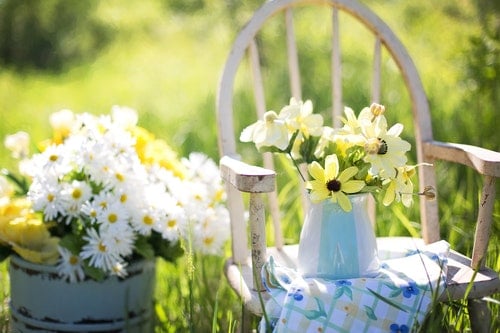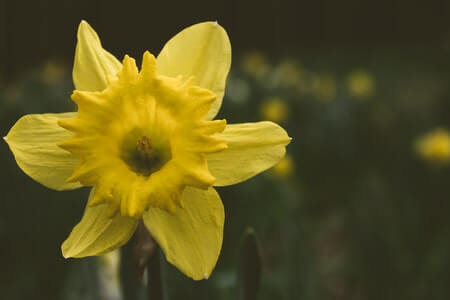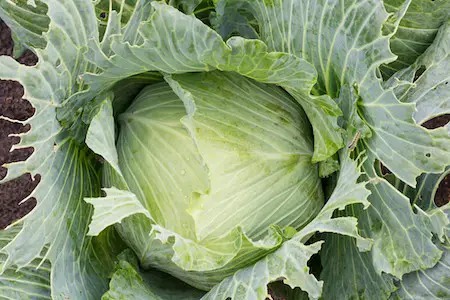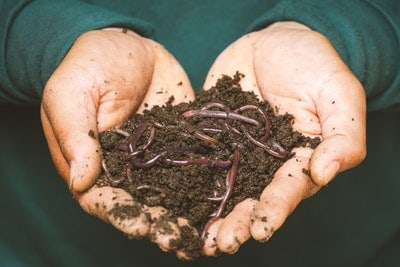Flowers are fun to plant. Having access to fresh flowers beautifies your home in and out, and with these tips below, you will get the most out of planting flowers.
12 Tips For Planting Flowers
Tip #1: Position Right
There are annual and perennial flowers that thrive in full sun, partial sun, and shades. It’s essential to know what conditions your flower plants thrive best. Flowers requiring full sun should be placed in the sun and shades or partial sun plants should be placed in shady areas. Its vital partial sun/shade flowers receive at least four hours of sunlight.
Tip #2: The Right Soil
Flowers require a loose, well-drained soil that is weed-free. Pebbles and rocks should be spotted and thrown out. When prepping the soil, try not to dig or handle a wet soil to avoid compaction. Plants need space between soil particles in other for roots to grow properly.
Tip #3: Start With Seeds
Starting your flower garden with seeds will not only save you money but give you the joy of watching them grow from tiny nothings to full blossomed plants. Sometimes seed transplants turn up poorly. You can check the directions of the product for more help. Ensure you don’t plant directly to the ground and start sowing on coir pots or trays. Use a seedling mixture and give plant access to full sun. Once a sturdy stem is visible, transplant immediately.
Tip #4: Be Careful With Nursery Plant
The nursery-grown plant gives you a start boost, but you have to be careful when handling them. It’s better to get all your gardening needs before purchasing the nursery flowers, take them home immediately and water as soon as you are home. After transplanting, water regularly to assist their roots from transplant shock[1].
Tip #5: Dig Deep
When transplanting dig a hole twice as big as the original pot, so the roots can have enough room to grow. Make a trench around the hole -this allows the root to spread. This tip is essential for clay soil and suitable for perennial flowers.
Tip #6: Mulch Right
Mulching is vital for preserving moisture and preventing weeds, but an inch is all it requires. Do not use landscape fabrics -aids in the moisture loss of the soil. Newspapers can be laid down before mulching.
Established garden beds do not necessarily need mulching as they can protect the soil themselves if you must mulch, do not pile up against the plants- this will rot in a short while.

Tip #7: Water Correctly
Generally, garden flowers require two inches of moisture to perform well. Water deeply and less frequently than surface wetting with persistent watering. Try not to disturb your fragile growing flowers by pouring water on them instead of watering close to the soil of each plant. If your bulbs are planted in a pot, water often in that the amount of soil is limited to hold the moisture- make sure there is a drainage system underneath the pots, you wouldn’t want the soil waterlogged as this can cause rotting of roots.
Tip #8: Avoid Lump Growth
Some people begin planting flowers in a pot or tray before transferring them to the ground. During transplanting, pull your flower out of the pot’s soil, disentangle the roots ball with your fingers so the root can grow adequately in the ground, rather than into a confined lump.
Tip #9: Add a Support System
Some flower varieties grow tall. Over time this growth impairs their ability to stand on their own, so place a stake or forked branches vertically in the ground for your flower plant to lean or wrap around for support. This is imperative for vine-y flowers.

Tip #10: Give Your Plant a Square Meal
Potting plants have no access to the ground; thus, the nutrients supplied to your plant is limited. Most varieties of flowers need fertilizers added to the soil for survival. You can begin with a slow-release fertilizer. Mix your soil with the fertilizer before planting in a bucket/container, then fill into your pot or mix both soil and fertilizer in the pot.
You might want to stay off artificial fertilizers as long usage will kill microorganisms in the soil, these organisms play a role in your plants’ growth if you must use an artificial fertilizer read or request advice from your garden store. Another way to fertilize your plant is using a liquid fertilizer which is usually a fish emulsion and seaweed blend, although it smells awful, it is a very nutritious addition to your soil. Fertilization should be done every two weeks.
Tip #11: Plant Suitable Companions
When planting two or more different flowers, whether in the ground or pot, make sure they play well together. This means the plants must require the same light and moisture. If you don’t consider these, plants with different needs will die. To know which flowers are suitable companions, check the plant tags or ask the salesperson.
Tip #12: Create a Pleasant Apparel
Don’t just go around planting suitable flowers! Consider colours. If your flower is planted in the ground, get beautiful pebbles, stones, or make brick edges to decorate them. And if they are in a pot, buy pots of different sizes, colours and designs. You could use an old pot from retail stores and give yourself a DIY project by decorating and painting them with eco-friendly tools.
Glossary
[1] Transplant shock – Link






